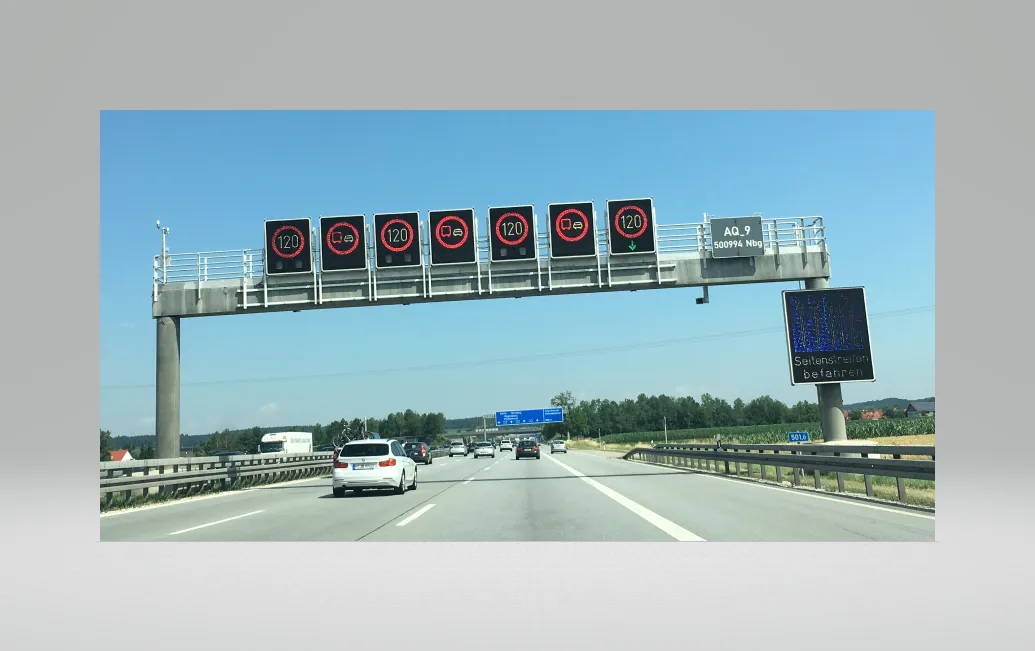New research carried out jointly by the Lighting Research Center and Penn State have identified links between visibility and safety from roadway lighting. The results are said to hold promise for predicting the safety benefits of new lighting configurations. Identifying when and where to install roadway illumination is a challenge for transportation agencies. Estimating nighttime crash reductions from roadway lighting is difficult in part because lighting tends to be installed along with other improvements
February 5, 2013
Read time: 4 mins
New research carried out jointly by the Lighting Research Center and Penn State have identified links between visibility and safety from roadway lighting. The results are said to hold promise for predicting the safety benefits of new lighting configurations. Identifying when and where to install roadway illumination is a challenge for transportation agencies. Estimating nighttime crash reductions from roadway lighting is difficult in part because lighting tends to be installed along with other improvements like traffic signals or channelisation, which makes it hard to isolate the benefits of lighting. Many believe that roadway lighting can improve visibility at night and that these improvements can provide drivers with increased time to respond to potential hazards. But previous efforts to relate visibility from roadway lighting to nighttime driving safety have been hampered by limited available data and by lack of consideration of vehicle headlights. Working to overcome these limitations, Lighting Research Center (LRC) director and professor Mark Rea and senior research scientist John Bullough, collaborating with Eric Donnell, associate professor at Penn State and faculty researcher at the university’s Thomas D Larson Pennsylvania Transportation Institute, have recently published a paper in the journal Accident Analysis and Prevention describing a parallel approach to lighting safety analysis.
The team used lighting and crash data for state highway intersections in Minnesota to develop quantitative models relating night time driving safety to the presence of lighting at these intersections. Importantly, these models also included the effects of features like signals, medians and other intersection design and operational features in order to segregate the effects of lighting from these other aspects. Further, different statistical approaches yielded similar results, bolstering their reliability. Data for the statistical analyses were provided by the Minnesota Department of Transportation through the2410 Federal Highway Administration's Highway Safety Information System.
In parallel, LRC researchers modeled prototypical roadway intersections with and without lighting, based on roadway lighting practices in Minnesota, and including the effects of vehicle headlights. Using a model of visual performance developed by Rea while at the National Research Council of Canada, they were able to estimate drivers' ability to detect potential hazards quickly and accurately under each lighting scenario compared to when no roadway lighting was present.
In both research efforts, Rea, Bullough and Donnell investigated rural and urban intersections with and without traffic signals. For example, the statistical models showed that roadway lighting at rural intersections tended to have small effects on nighttime driving safety. The team's visibility analyses suggested that rural intersection lighting provided relatively little benefit in terms of visual performance, because most rural intersections are illuminated by one or two poles located at the junction, but the high traffic speeds on most rural highways require drivers to see hazards when those hazards might still be some distance from the junction. Most importantly, the statistical safety improvements associated with lighting were strongly correlated with the visibility improvements for all intersection types evaluated.
"While the finding that safety benefits from roadway lighting are highly related to the visibility improvements lighting provides is not novel nor unexpected, evidence for this direct link has been scarce in the literature," said Rea. "Our models provide a tool that transportation agencies can begin using now to not only allocate lighting more efficiently, but to design lighting more effectively." As new practices such as solid-state lighting, adaptive roadway and vehicle lighting, and benefit-cost analysis continue to emerge, tools like those described by Rea, Donnell and Bullough will help agencies specify and shape lighting that minimizes energy use and environmental impact while maximising the use of limited public resources.
The full text of the paper, “To illuminate or not to illuminate: Roadway lighting as it affects traffic safety at intersections” is available at %$Linker:2 External <?xml version="1.0" encoding="utf-16"?><dictionary /> 0 0 0 oLinkExternal http://dx.doi.org/10.1016/j.aap.2012.12.029 http://dx.doi.org/10.1016/j.aap.2012.12.029 false http://dx.doi.org/10.1016/j.aap.2012.12.029 false false %>.
The team used lighting and crash data for state highway intersections in Minnesota to develop quantitative models relating night time driving safety to the presence of lighting at these intersections. Importantly, these models also included the effects of features like signals, medians and other intersection design and operational features in order to segregate the effects of lighting from these other aspects. Further, different statistical approaches yielded similar results, bolstering their reliability. Data for the statistical analyses were provided by the Minnesota Department of Transportation through the
In parallel, LRC researchers modeled prototypical roadway intersections with and without lighting, based on roadway lighting practices in Minnesota, and including the effects of vehicle headlights. Using a model of visual performance developed by Rea while at the National Research Council of Canada, they were able to estimate drivers' ability to detect potential hazards quickly and accurately under each lighting scenario compared to when no roadway lighting was present.
In both research efforts, Rea, Bullough and Donnell investigated rural and urban intersections with and without traffic signals. For example, the statistical models showed that roadway lighting at rural intersections tended to have small effects on nighttime driving safety. The team's visibility analyses suggested that rural intersection lighting provided relatively little benefit in terms of visual performance, because most rural intersections are illuminated by one or two poles located at the junction, but the high traffic speeds on most rural highways require drivers to see hazards when those hazards might still be some distance from the junction. Most importantly, the statistical safety improvements associated with lighting were strongly correlated with the visibility improvements for all intersection types evaluated.
"While the finding that safety benefits from roadway lighting are highly related to the visibility improvements lighting provides is not novel nor unexpected, evidence for this direct link has been scarce in the literature," said Rea. "Our models provide a tool that transportation agencies can begin using now to not only allocate lighting more efficiently, but to design lighting more effectively." As new practices such as solid-state lighting, adaptive roadway and vehicle lighting, and benefit-cost analysis continue to emerge, tools like those described by Rea, Donnell and Bullough will help agencies specify and shape lighting that minimizes energy use and environmental impact while maximising the use of limited public resources.
The full text of the paper, “To illuminate or not to illuminate: Roadway lighting as it affects traffic safety at intersections” is available at %$Linker:







